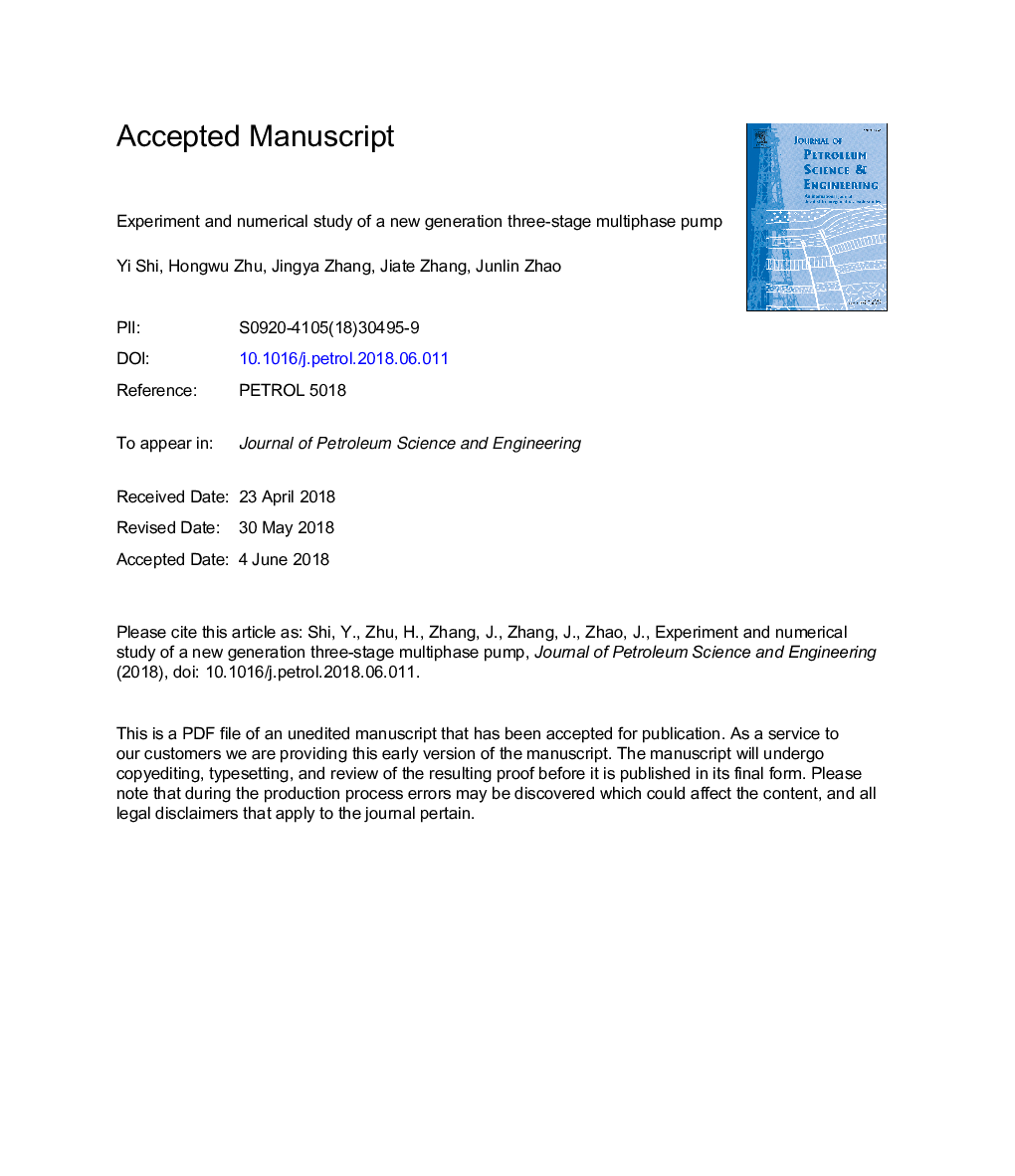| کد مقاله | کد نشریه | سال انتشار | مقاله انگلیسی | نسخه تمام متن |
|---|---|---|---|---|
| 8124587 | 1522772 | 2018 | 40 صفحه PDF | دانلود رایگان |
عنوان انگلیسی مقاله ISI
Experiment and numerical study of a new generation three-stage multiphase pump
ترجمه فارسی عنوان
آزمایش و مطالعه عددی یک پمپ چند مرحله ای سه مرحله ای نسل جدید
دانلود مقاله + سفارش ترجمه
دانلود مقاله ISI انگلیسی
رایگان برای ایرانیان
کلمات کلیدی
موضوعات مرتبط
مهندسی و علوم پایه
علوم زمین و سیارات
زمین شناسی اقتصادی
چکیده انگلیسی
Multiphase pump is a cost-effective option for subsea gas and oil fields development. The ability of handling different gas volume fractions with high rotational speed is necessary to optimize the operating performance of a multiphase pump. Thus meeting the demand for increasing gas and oil production of undersea wells especially for those brownfields. This study aims to validate the performance of a three-stage helico-axial multiphase pump with new designed impellers and high rotational speed in both single and two-phase experiments. Then establish a numerical analysis method to predict the pump performance and evaluate the characteristics of multiphase flow with high reliability by using commercial CFD packages. The design volume flowrate of the pump is 100â¯m3/h and rotational speed is 4500â¯rpm. The experiment results show that the highest efficiency is 45% in water condition at the design parameters. There is not much difference on the pump performance at low inlet gas volume fractions (GVF) such as 5% and 10%, which indicates that multi-stage pump can prevent large performance degradation at low inlet GVFs. Numerical simulations are implemented by solving the three-dimensional steady Reynolds-Averaged Navier-Stokes (RANS) equations. The effects of various turbulence models, wall roughness, gas bubble sizes and interphase drag models on the hydraulic performance of multiphase are investigated. The results show that the predicted performance with Shear Stress Transport (SST) turbulence model at the optimal conditions agree well with the experiment data. Wall roughness should be considered since it has a significant effect on pump efficiency. Gas bubble size varies according to different inlet GVFs and rotational speed. The in-situ αg is high in diffuser and it varies with different interphase drag force models. The reliability of the numerical analysis method is proven by comparing the numerical results and experiments data.
ناشر
Database: Elsevier - ScienceDirect (ساینس دایرکت)
Journal: Journal of Petroleum Science and Engineering - Volume 169, October 2018, Pages 471-484
Journal: Journal of Petroleum Science and Engineering - Volume 169, October 2018, Pages 471-484
نویسندگان
Yi Shi, Hongwu Zhu, Jinya Zhang, Jiate Zhang, Junlin Zhao,
